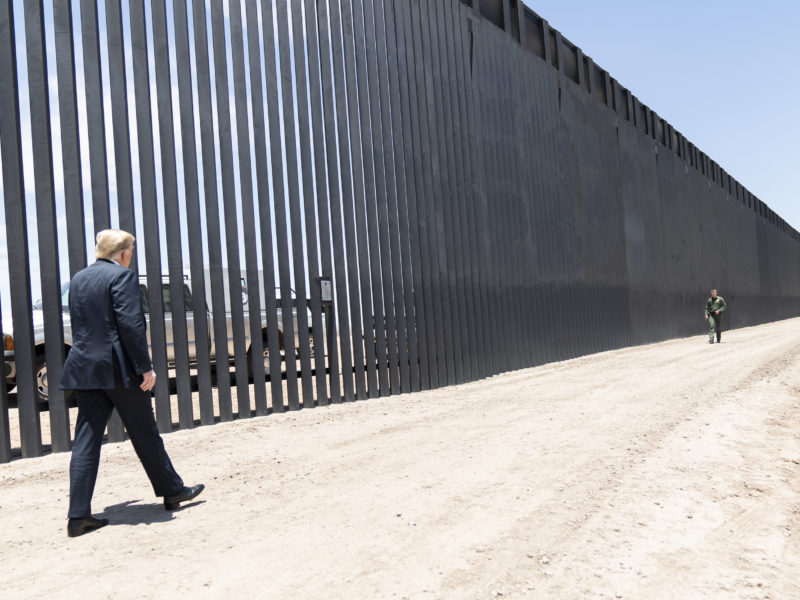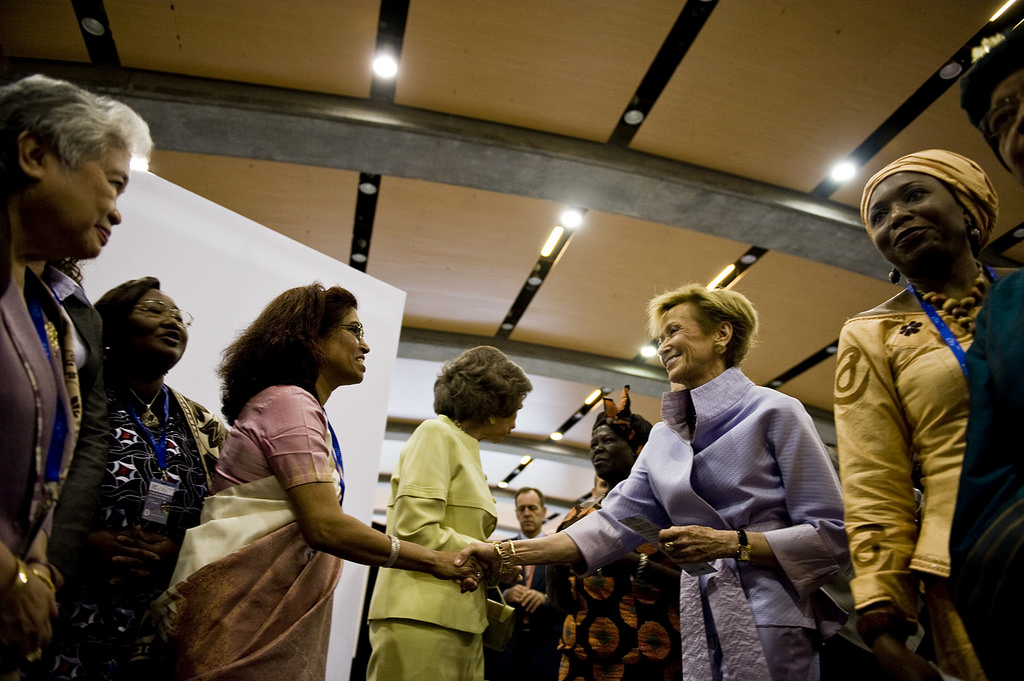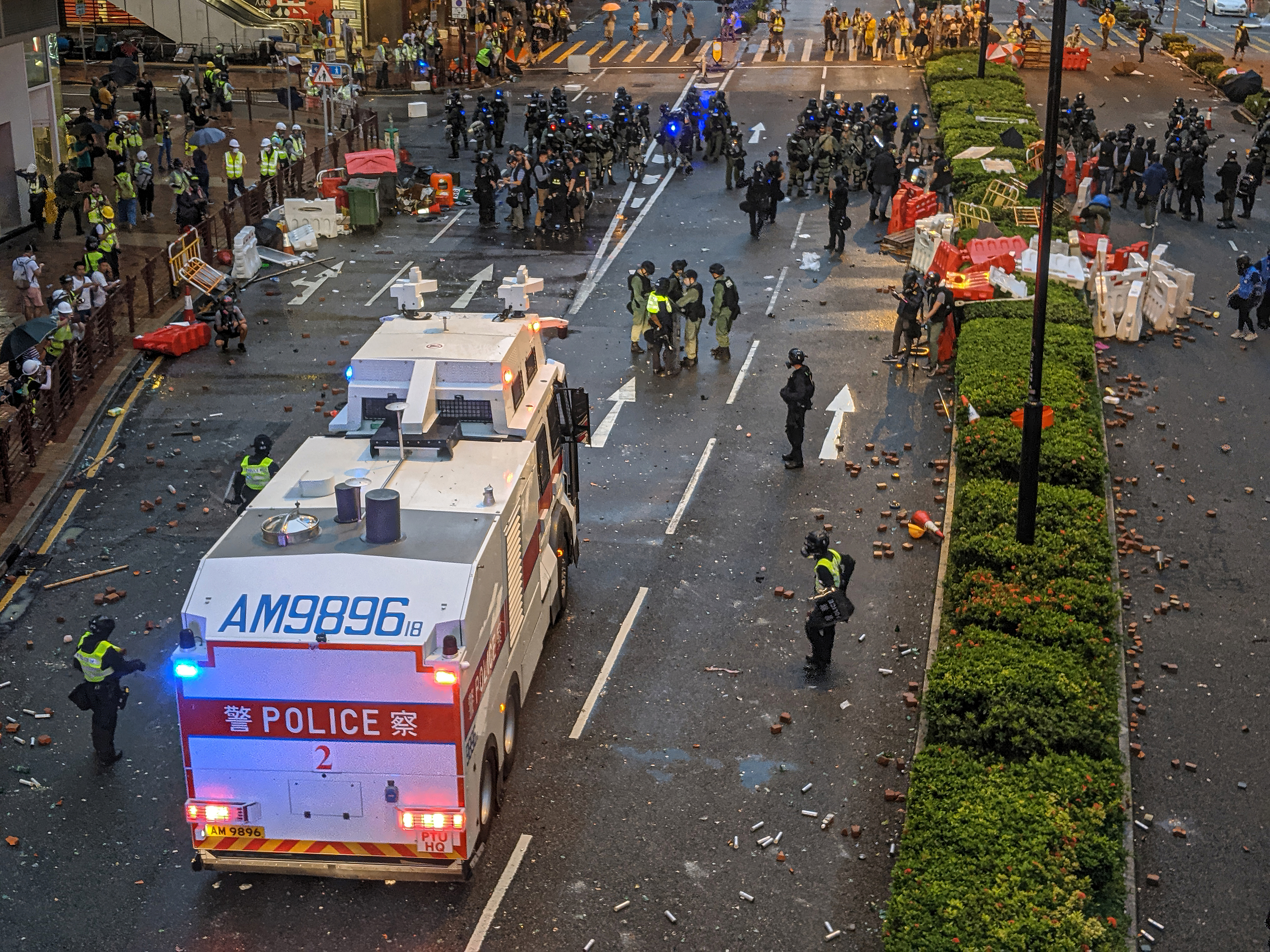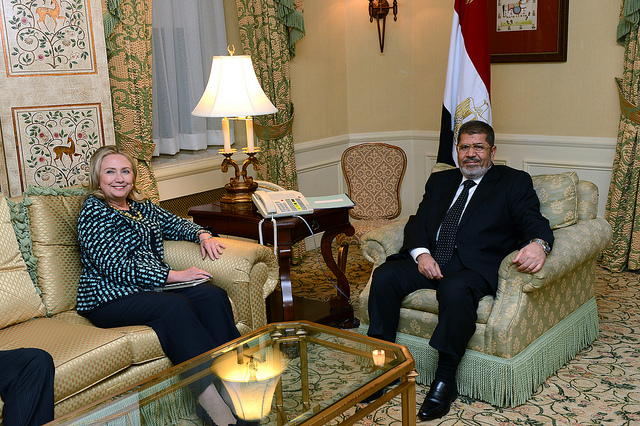By Alex Braithwaite and guest contributor Christopher Linebarger
President Trump’s recent visit to Arizona came at a time when the Southwest border state was setting unenviable records for poor containment of the COVID-19 outbreak—fueling what will soon likely be considered a humanitarian crisis. Trump’s intention was to return focus to the topic of the border wall ahead of this Fall’s presidential election. He visited wall construction near Yuma early in the day before addressing a small crowd of supporters at a rally in Phoenix. On both occasions, he spoke of the need to secure the border against nefarious actors on the other side and claimed that construction of the wall had “stopped” COVID-19 at the border—the wall is still under construction.
Is Trump’s bravado just an attempt to divert attention from his mishandling of COVID-19 and its social and economic impacts (not to mention the ongoing protests against racism and abuses in the criminal justice system)? Our series of papers on border walls offer some clues.
When Trump signed his executive order shortly after his inauguration in January 2017, he explicitly noted the need for a wall to limit illegal immigration, drug and human trafficking, and acts of terrorism. But do walls actually work to deter mobility? In a recently published article, we examine all borders globally over the past half-century and show that border fortifications generally are not effective in limiting the spread of militancy between countries. Instead, walls and other fortifications only limit this diffusion in contexts where states can monitor and police their borders—something that the US, with or without walls, has consistently been unable to do.
That a wall on the US border with Mexico is unlikely to limit militancy comes as no great surprise. After all, terrorism in the US is mostly homegrown and mostly carried out in the name of white supremacy. There is no evidence of terrorists arriving in the US via the southern border. And of the approximately 150 foreign-born individuals identified in the US as having carried out or plotted a terrorist attack, only one was Mexican. Even if we relax the notion of militancy, the logic of a wall does not pass muster. Trump’s executive order spoke of a need to limit trafficking. However, while a significant amount of illegal narcotics arrive in the US from its southern neighbor, those responsible for its transfer have long proven capable of outsmarting border security.
A majority of the US public has consistently opposed the expansion of the border wall (here, here, here, and here). But a stubborn minority continues to believe a wall is necessary to protect against transnational security threats. In a working paper exploring the domestic motivations behind building walls globally, we suggest that this is not because these kinds of threats are real, but rather that leaders fabricate them to justify building walls, because they view walls as a viable method of diverting public attention from domestic failings.
Holding a rally in the country’s latest COVID-19 hotspot surely ran the risk of backfiring by reminding the public of the Trump administration’s failure to contain the outbreak. However, the President appears to think that the risk is worth taking for this battleground state, and for the opportunity to renew his commitment to the wall. Oh, and Yuma is one of very few places on the border where any progress has been made on the project.
Trump’s wall-building obsession and his aggressive attempts to dismantle America’s immigration policies fit with wider patterns of opportunism in the wake of pandemics. In another working paper, we show that global patterns of epidemics are associated with a tendency for countries to implement long-term, restrictive immigration policies. Nationalist leaders are opportunistic—they’ll use epidemics to pursue long-sought immigration and border restrictions. Already, leaders like Hungary’s Victor Orban have used the crisis to foster xenophobia, and far-right opposition parties, for example in Italy and Germany, have used the pandemic as an opportunity to demonize refugees.
So, what can be done about this? Possibly not a lot as long as the pandemic rages on. After all, some border restrictions have been necessary to slow rates of infection. But voices are needed to communicate the damage being done, both globally and nationally, to policies that promote and protect migration. Things aren’t getting better. Just last week, the Trump administration halted access to H1B visas, which facilitate the entry of skilled workers to the US.
Our greatest hope might be that challengers forge election campaigns focused on educating voters about what measures are necessary to guard against contagion and what is clearly excessive and opportunistic behavior. We could also be sure to remind citizens of the massive contributions made by immigrants as front-line and essential workers to the success of the US economy during and after the pandemic, and, as we noted at the outset, that walls are rarely effective at securing against transnational threats.
Christopher Linebarger is an Assistant Professor of Security Studies in the School of Criminology and Justice Studies at the University of Massachusetts Lowell. Alex Braithwaite is a Professor in the School of Government & Public Policy at the University of Arizona and is a permanent contributor at PV@Glance.






